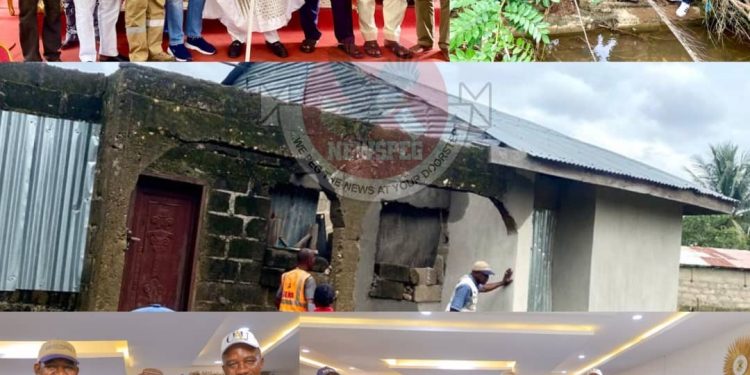By Nkechi Eze
The National Emergency Management Agency (NEMA) has carried out a joint rapid assessment of the recent flooding incidents that affected communities in Lokoja and Kabba Local Government Areas of Kogi State, following reports of rising water levels and displacement of residents.
According to a statement from the agency, NEMA’s Director General, Mrs. Zubaida Umar, swiftly activated the Abuja Operations Office, which oversees Kogi State, and directed the immediate deployment of a response team to evaluate the extent of damage and recommend appropriate relief actions.
Led by Mr. Zakari Abubakar, Head of the Abuja Operations Office, the NEMA team arrived in Lokoja and held a pre-assessment briefing with officials of the Kogi State Emergency Management Agency (KOSEMA) and other key stakeholders. As part of the coordinated response, the team also paid a courtesy visit to the Deputy Governor of Kogi State, Elder Joel Salifu, before heading to affected communities in Lokoja and Kabba for on-the-ground evaluations.
Preliminary findings from the assessment revealed that while no lives were lost, several residential buildings were inundated, leaving numerous households displaced. The floods also submerged farmlands, resulting in the loss of crops and livelihoods for many residents.
The joint assessment team included representatives from NEMA, KOSEMA, the Kogi State Fire Service, the Executive Chairman of Kabba LGA, local government officials, traditional rulers, and youth representatives. Their collective presence underscored the importance of a multi-stakeholder approach to disaster response and recovery.
Mrs. Zubaida Umar, in her remarks, reaffirmed NEMA’s commitment to support the Kogi State Government in mitigating the impact of the floods and pledged that the agency would work closely with all relevant partners to ensure timely assistance and long-term recovery efforts for the affected populations.
She emphasized the need for continuous collaboration between federal, state, and community stakeholders in managing disaster risks and enhancing resilience in vulnerable areas.
















